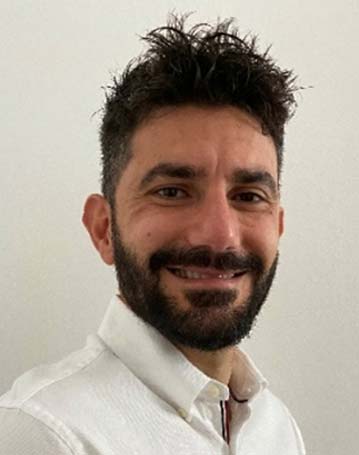
MODALIS2 – Role of the partner Gemmate
Interview with Alessio Tommasi
Alessio Tommasi is Technical Manager at Gemmate Technologies. Researcher both in academic and industrial contexts. He is responsible for the development, management, and execution of technology innovation projects, also in the context of public research funding with the mission to improve the company know-how in the domains of interest.
What is the overall expertise of Gemmate?
The mission of Gemmate Technologies (GEM) is to innovate existing products and develop new ones from science and technology advances. To accomplish its mission, GEM focuses its efforts on the application of proven scientific discoveries, the upscaling of innovative technologies, and the development of methodologies and standards. Through this process, we aim to increase the technology readiness level (TRL) of products which promise to make an impact on Europe’s most important industrial sectors
To apply this approach on the MODALIS2 project, GEM has brough its team’s expertise in modelling methods, namely: (i) Density Functional Theory (DFT), a computational method which employs quantum mechanical calculations to investigate a material’s physical and chemical properties, and (ii) Finite Elements Method (FEM) multi-physics modelling, which allows to simultaneously represent several physical aspects of a finite system.
Which role does GEM have in MODALIS2? What are your specific tasks?
The main role of GEM within the MODALIS2 project is in the implementation of multi-scale models of the battery components at the atomic and mesoscale level. Coupling the use of ab-initio DFT codes and FEM-based modelling GEM aims to bridge the gap between the atomistic-scale chemical information, provided by quantum mechanical results, and the physical models which are the standard for battery simulation in industrial setting. This objective is met through the DFT and FEM modelling of the specific anodic, cathodic and electrolytic components in the batteries used by the MODALIS2 project, based on the characterization performed on these materials. The quantum mechanical models are the basis for the calculation of several properties of these materials which can be then transferred to the finite element models as a function of the lithium concentration, allowing the integration in these models of finer levels of detail, which could not have been obtained using solely experimental characterizations.
Which benefits derive from the project for GEM?
The MODALIS2 project brought benefits for GEM in the form of a wide range of new competences and an expansion of its collaboration network. As new staff was added to the team for this project, their competences enriched the range of expertise in GEM, while the project itself helped the team hone their skills and knowledge. Specifically, thanks to collaborative research projects like MODALIS2, GEM is now capable to exploit DFT modelling results within mechanical, diffusion and thermal models of Li-ion batteries (and, generally speaking, in the energy conversion and accumulation fields) within which those materials are used. This is a very important but understudied niche, which allows for finer-detail characterization of the materials but requires skills and knowledge from a wide range of very different disciplines, which unfortunately are rarely brought together.
Furthermore, as engineering service provider GEM has a wide business portfolio that includes developing prototypes and specific designs for applications in energy, space/aeronautics and e-mobility. Participation within MODALIS2 allows GEM to build upon the core competencies in the field of predictive tools for battery performances and ageing of battery materials. The exploitation roadmap foresees the co-design of prototypes for existing and new clients, taking advantage of the enhanced intellectual properties developed during the project.
Which challenges are you facing in the project?
The MODALIS2 project has brought forward several challenges for the GEM team. The complexity of the materials used in technological applications such as Li-ion batteries is hard to convey at a molecular level; as this complexity is reflected on the quantum-mechanical calculations performed by GEM, very long computational times are required to capture the chemical properties which are driving the performances of those materials. Similarly, at the mesoscale, a wide range of parameters within the calculations, such as phenomena, geometries, and boundary conditions, need to be tailored to make the model suitable for a FEM-based multi-physics simulation, so that appropriate levels of stability and computing power demand are achieved.
However, the computational resources of GEM have grown over the course of the project, as well as the team’s understanding of both the materials and the techniques used. This growth equipped us with the tools to overcome those challenges and to assist our partners in the MODALIS2 toolchain implementation by providing them with reliable and insightful results.



